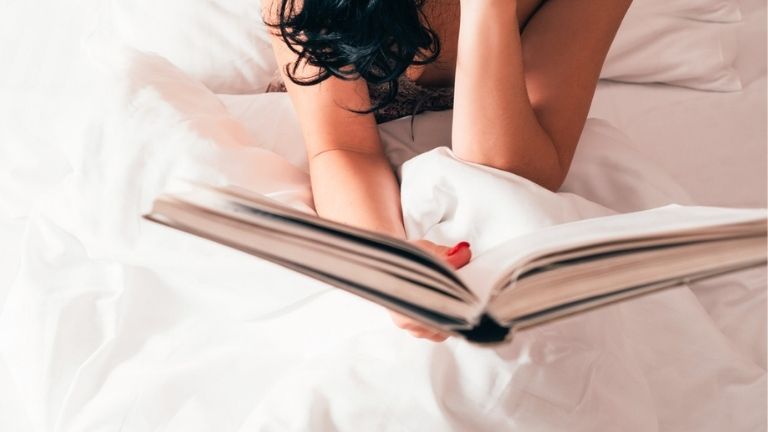Health rituals can offer some comfort in times of stress and crisis. A range of experts explain why rituals are the well-being tools we all need right now
By Jane Collins
Anthropologists say a ritual is something we turn to in times of crisis because it is comforting in its repetitiveness.
Psychologists suggest this comfort stems from the slightly rigid and formulaic nature of a ritual which works to remove anxiety from a given situation.
‘Performing rituals gives us a sense of agency and perceived control, which is paramount in times of uncertainty,’ says Chartered Psychologist Dr Meg Arroll.
A survey commissioned by well-being brand Healthspan revealed that more than half of the people polled adopted a number of healthy rituals over the last 18 months, to help them through the pandemic.
having a cuppa was the designated relaxing ritual of choice for most
Indeed, nearly 60 per cent said rituals make their life easier, 33 per cent use rituals to feel calmer and 21 per cent say rituals help to manage stress.
Unsurprisingly, having a cuppa was the designated relaxing ritual of choice for most, serving as a soothing balm for the soul.
From sitting down to eat together to clapping for Carers on Thursday evenings, rituals provided a small sense of order in a disordered pandemic-hit world.
As tools of resilience go, rituals are not only soothing in their familiarity but can also be helpful in terms of creating healthier behaviours too.
To understand how, Healthista spoke to a range of health experts who explain exactly what rituals can do for your health.
#1 Sleep Ritual
‘Developing a wind down ritual is instrumental in getting a good night’s sleep’, says Sleep Therapist and body clock expert Dr Kat Lederle.
‘For best results, start yours around 90 minutes before your usual bedtime, and as far as possible try to stick to the same bedtime and wake up at the same time.
‘This will help regulate your sleep/wake cycle and train your body to use the time it has to sleep more efficiently’.
Run a hot bath
A US study published in Sleep Medicines Review found taking a hot bath 90 minutes before bed helped people fall asleep faster.
This is because your body’s core temperature is raised during a bath, then drops after you get out as you start to cool down, and in order to sleep well, your body temperature needs to drop one degree.
Turn off all screens
Stop all screen time in this 90 minutes too, as blue light from phones, computers and tablets gets in the way of sleep hormone melatonin.
Production of melatonin is ramped up in response to the dark so part of your night time ritual should be to avoid any bright lights.
Production of melatonin is ramped up in response to the dark
Dim the lights or light a candle if this helps, the Tisserand Sleep Better Candle contains jasmine, sandalwood and lavender to help soothe you before bed.
Plus, having a familiar ‘sleep scent’ as part of your ritual should, in time, help to trigger it is time for your body to sleep.
Have a relaxing tea
If you enjoy a tea in the evening, choose a relaxing chamomile or lavender tea. If you feel you need it, try also a sleep-enhancing supplement like magnesium, Valerian or one containing CBD, such as CBD Support Night Time by Healthspan, around 45 minutes before your turning in time.
Read a book or listen to an audiobook
Listen to some relaxing music, the radio or an audiobook to help relax you into sleep.
‘It might take time to develop a new ritual so be patient with yourself. Over time, your brain will start to link these behaviours with sleep and simply engaging in the ritual will act as a gentle, natural sedative’, explains Dr Arroll.
#2 Immune-supporting Ritual
‘Your immune system is not something that can be miraculously boosted by a special tonic, supplement or ‘superfood’, but is best achieved through actions and behaviours you practice consistently across all areas of diet and lifestyle,’ explains Immunologist Dr Jenna Macciochi.
‘Engaging in rituals that make us feel relaxed can help to communicate to our immune system that we feel safe so that it doesn’t feel primed for danger and release unwanted inflammation.
‘By building calming rituals we can use these during times of stress to restore balance in our unbalanced lives’.
Engaging in rituals that make us feel relaxed can help to communicate to our immune system
Try going for a walk while listening to a relaxing piece of music. You can then put on that same music when you are stressed but can’t get out for a walk.
Other immune-maintaining and daily self-care rituals Dr Macciochi recommends include adding fresh mint and rosemary to a bottle of water which you keep on your desk in front of you.
The water will keep you hydrated and research from Northumberland University has shown rosemary can enhance both memory and focus.
#3 Joint Pain Relief Ritual
Whether is was caused by an over-zealous workout, is a side effect of the menopause or you’ve spent too long hunched up over a computer screen, most of us will experience joint pain at some point.
As a child many of us were told that ‘rubbing it better’ quickly reduces pain, and there is a scientific reason why.
‘Rubbing stimulates nerve endings that send signals to the brain, overwhelming those from pain receptors, so the perception of discomfort is reduced,’ says GP and Healthspan Medical Director Dr Sarah Brewer.
Start your pain relief ritual by taking a bath with a handful of muscle-relaxing magnesium flakes
Incorporating massage as part of a pain-reducing ritual can be effective for treating sports injuries and any painful, achy joints.
Start your pain relief ritual by taking a bath with a handful of muscle-relaxing magnesium flakes – lie back and relax in it for 20 to 30 minutes.
Dry yourself off and try the new beautiful Alexandra Kay Time to Ease Body Massage Oil, which combines the phytoactive CB2-Skin™ Biofunctional pure plant actives with pain-relieving properties.
Plus, it contains ginger and black pepper to provide a warming heat relief, while peppermint and eucalyptus help to soothe sore muscles.
Taking a traditional herbal remedy like Devil’s Claw should also help support pain relief. This herb contains compounds called iridoid glycosides which have demonstrated anti-inflammatory effects and appear to help with muscular or rheumatic aches and pains.
More human studies are needed, but there is also promising research to show that CBD oil has anti-inflammatory and pain-relieving effects too.
Try Healthspan CBD Support Joints, £33.95, where it is combined with joint-cushioning collagen and joint and muscle-enhancing vitamins C and D.
Keep these products in a prime position so they act as a visual prompt to start your pain relief ritual whenever you need to.
#4 Healthy Eating Ritual
Another positive ritual many of us instinctively turned to during the lockdowns was having a proper sit-down dinner – so much so that now one in six now always set a day a week where the whole family get together to share a meal, according to the Healthspan survey.
This is important for both social connectedness and as Healthspan Head of Nutrition Rob Hobson points out ‘eating mindfully’.
Statistics from YouGov show that one in three children eats their evening meal in front of the TV, and almost 30 per cent do the same for breakfast.
eating in front of the TV or scrolling through social media whilst eating, leads us to eat more
Research shows that eating in front of the TV or scrolling through social media whilst eating, leads us to eat more because we are more focused on looking at that than our food.
It’s been labelled ‘distracted eating’ and there’s an established link between screen time and increased weight (especially amongst children).
If we quite literally, make more of a meal of our meal – laying the table and sitting down with others without the distraction of screens – we tend to be more conscious of how much we are eating and are more likely to respond to our body’s natural signal that we have eaten enough.
So put your phone away and ideally prepare the table in a room that doesn’t have a TV or computer, then sit down and focus on chewing your food slowly and savouring it.
#5 Calming Ritual
When having a cuppa doesn’t quite cut it as your go-to calming ritual, one of the simplest ways to achieve a more zen-like state is to focus on your breathing.
This is a significant part of Ayurveda, the ancient Indian system of medicine which includes herbal medicines and breathing exercises known as pranayama.
‘These breathing exercises promote calm, decrease heart rate, lower blood pressure and have beneficial effects on brain waves which help to make you feel more alert and invigorated,’ explains Dr Brewer.
Do your stress-relief breathing exercise in conjunction with taking an ashwagandha supplement. This adaptogenic herb has been used for centuries in Ayurveda to help manage stress but those benefits are now supported by science.
breathing exercises promote calm, decrease heart rate, lower blood pressure and have beneficial effects on brain
One study tested participants with a history of chronic stress giving them either 300mg of ashwagandha twice daily for 60 days or a placebo.
The study found a significant decrease in the levels of stress reported by the ashwagandha group.
Part two of the calming ritual is to take yourself off somewhere quiet and comfortable and try this:
- Sit with your arms hanging loosely by your sides.
- Breathe in slowly and deeply focusing on the rise and fall of your abdomen (rather than your chest).
- When you have inhaled as far as possible, immediately start to breathe out, emptying your lungs as far as possible.
- Continue breathing in and out in this way but gradually speed up your inhalations and slow your exhalations until you reach a point where you are spending around three seconds breathing in and seven breathing out.
Ideally do this for five minutes to feel more emotionally and physically ‘balanced’.
#6 Menopause Ritual
‘The menopause can feel like an unpredictable time, in which there is a sense of loss of control over one’s body,’ describes Dr Arroll, co-author of The Menopause Maze, Jessica Kingsley.
The power of ritual can come into its own during the menopause, symptoms of which include joint pain, mood swings, brain fog, inability to concentrate, insomnia, notoriously hot flushes and night sweats.
It’s tricky to create a one size fits all ritual for menopause when all women experience it differently but you can tailor your ritual according to your symptoms, including any of the above rituals – the sleep, joint pain-relief and anti-stress ones can be especially appropriate.
The power of ritual can come into its own during the menopause
Given up to 80 per cent of women will experience hot flushes, this can exacerbate other symptoms like anxiety and brain fog.
If you are experiencing these symptoms, you may benefit from taking a plant oestrogen supplement containing flax, sage or soy extracts – which have been shown to help manage and reduce them.
A supplement like Healthspan MenoSerene, contains a blend of these phyto-oestrogens with 12 vitamins and eight minerals.
Creating a morning and evening menopause ritual will benefit you more. Take flush-minimising supplements in the morning and in the evening open your bedroom window and wear nightwear made from natural and/or breathable fabrics, so night sweats are less likely to disrupt your sleep.
More Healthista Content:
5 ways to feel awake and alert EVERY morning
7 ways to naturally manage winter aches and pains – an Osteopath’s guide
Endometriosis symptoms? Here’s what you need to know
How to boost your self esteem and find your inner confidence
The best exercise for menopause
Like this article? Sign up to our newsletter to get more articles like this delivered straight to your inbox.



























































